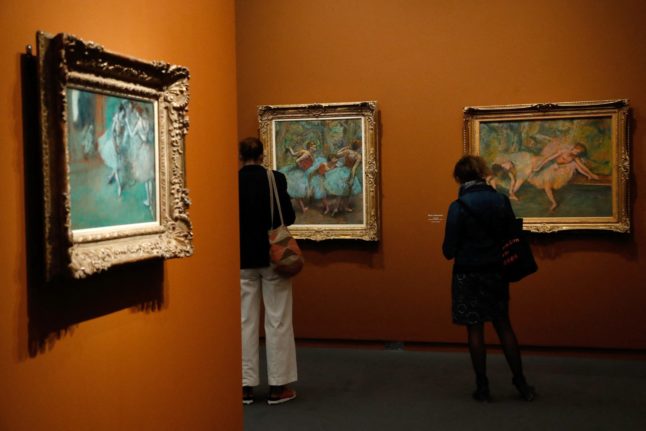Using VR technology, visitors to “Paris 1874: Inventing Impressionism” can take a plunge into the streets, salons and beauty spots that marked a revolution in art.
Through VR helmets, they can walk alongside the likes of Claude Monet, Edgar Degas and Paul Cezanne on April 15, 1874, when, tired of being rejected by the conservative gatekeepers of the official art Salon, these rebellious young painters put on their own independent show, later seen as the birth of Impressionism.
The Orsay has brought together 160 paintings from that year, including dozens of masterpieces from that show, including the blood-red sun of Monet’s “Impression, Sunrise”, credited with giving the movement its name, and his “Boulevard des Capucines” where the exhibition took place.
READ MORE: Places to visit and things to do in France in Spring 2024
In rapid, spontaneous brushstrokes, the Impressionists captured everyday scenes of modern life, from Degas’s ballet dancers to Camille Pissaro’s countryside idylls to Auguste Renoir’s riverside party in “Bal du Moulin de la Galette”.
They came to define the excitement and restlessness of a new, modern age emerging out of a devastating war with Prussia and a short-lived Parisian revolt a few years earlier.
“The Impressionists wanted to paint the world as it is, one in the midst of major change,” said Sylvie Patry, co-curator of the exhibition.
“They were interested in new subjects: railways, tourism, the world of entertainment… They wanted to put sensations, impressions, the immediate moment at the heart of their painting,” she added.
‘Nuanced’
Thanks to loans from the National Gallery in Washington and other museums, it is the first time that many of the paintings — including Renoir’s “The Parisian Girl” and “The Dancer” — have hung together in 150 years.
The exhibition also includes works from that year’s official Salon, showing how the Impressionists rejected the stiff formalism of traditionalists and their obsession with great battles and mythological tales, but also how there was some cross-over, as all sorts of painters gradually adopted new styles.
“The story of that exhibition is more nuanced than we think,” said Patry.
“The artists all knew each other and had begun painting in this different style from the 1860s.”
Impressionism did not take off immediately: only some 3,500 people came to the first show, compared with 300,000 to the Salon, and only four paintings were sold out of some 200 works.
It would take several more exhibitions in the following years for the movement to make its mark.
The Orsay exhibition runs to July 14th and moves to Washington from September.
The virtual reality experience has been extended to the end of the Paris Olympics on August 11th.



 Please whitelist us to continue reading.
Please whitelist us to continue reading.
Member comments